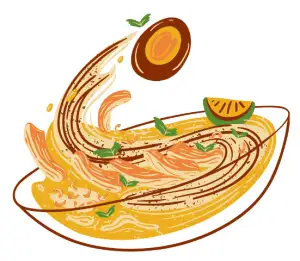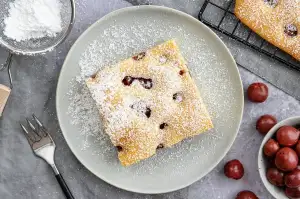Rhubarb Harvesting Guide: Discover the Perfect Time to Harvest Rhubarb at Home

Rhubarb, with its vibrant red stalks and tart flavor, is a beloved addition to many culinary creations. Whether you're a seasoned gardener or just starting out, harvesting rhubarb can be a rewarding experience. But before you dive into the process, it's important to understand the growth cycle of this unique plant and how to determine when it's ready for harvest. In this guide, we will explore the signs of rhubarb readiness, the best time to harvest, as well as techniques for harvesting and preserving your bounty. So let's get started on this journey of discovering the perfect time to harvest rhubarb at home!
Understanding Rhubarb Growth Cycle
To successfully harvest rhubarb, it is important to have a good understanding of its growth cycle. Rhubarb is a perennial plant that goes through distinct stages of growth throughout the year.
In early spring, rhubarb plants emerge from their dormant state. The first sign of growth is the appearance of small, red or green shoots breaking through the soil. These shoots quickly develop into large, vibrant green leaves.
During the summer months, rhubarb plants continue to grow and produce more leaves. The leaves capture sunlight and convert it into energy through photosynthesis. This energy is stored in the plant's roots and used for future growth.
As fall approaches, rhubarb plants start to prepare for dormancy. The leaves begin to turn yellow and eventually wither away. This is a natural process as the plant redirects its energy towards its root system.
During winter, rhubarb enters its dormant phase. The plant remains inactive but continues to store nutrients in its roots in preparation for the following growing season.
Understanding this growth cycle is crucial because harvesting at the wrong time can weaken the plant and reduce future yields. By waiting until the appropriate stage of growth, you ensure that your rhubarb plant remains healthy and productive for years to come.
Signs of Rhubarb Readiness for Harvest
Before you can enjoy the tangy and tart flavors of rhubarb, it's important to know when it's ready to be harvested. Here are some signs to look out for:
1. Size: Mature rhubarb stalks should be at least 10-15 inches long and about an inch in diameter. If the stalks are thin and small, it's best to wait a little longer before harvesting.
2. Color: The color of the stalks is another indicator of readiness. Look for bright, vibrant red or pinkish stalks with a glossy appearance. Avoid harvesting if the stalks are green as they are not fully ripe.
3. Firmness: Gently squeeze the stalks to check their firmness. Ripe rhubarb should feel crisp and firm, similar to celery. If the stalks feel soft or mushy, they may be overripe and past their prime for harvest.
4. Leaves: While the focus is usually on the stalks, it's essential to pay attention to the leaves as well. Healthy rhubarb leaves should be large, green, and upright. If you notice any yellowing or wilting leaves, it could indicate a problem with your plant.
By keeping an eye on these signs, you'll be able to determine when your rhubarb is ready for harvest and ensure that you pick it at its peak flavor and texture.
Best Time to Harvest Rhubarb
The best time to harvest rhubarb is in the spring, usually from April to June, depending on your location. It's important to wait until the plant is mature enough before harvesting. This means giving it at least two years to establish itself before taking any stalks. By doing so, you allow the plant to develop a strong root system and ensure a healthy harvest for years to come. Remember, patience is key when it comes to rhubarb!
Harvesting Techniques for Rhubarb
Harvesting rhubarb requires careful techniques to ensure a bountiful and successful harvest. When it comes to harvesting rhubarb, it's important to remember that only the stalks should be harvested, while the leaves should be left untouched as they are toxic.
To harvest rhubarb, start by grasping the stalk firmly near its base and give it a gentle tug upwards. The stalk should easily detach from the crown of the plant. Avoid cutting or snapping off the stalks as this can damage the crown and reduce future growth.
When selecting which stalks to harvest, opt for those that are thick and firm, with vibrant colors such as deep red or pink. These are usually more mature and have a better flavor. Smaller, thinner stalks may not be fully developed and might lack sweetness.
It's important not to overharvest rhubarb during its first year of growth. Allow at least one-third of the stalks to remain on the plant so that it can continue to grow and thrive for future harvests. In subsequent years, you can increase your harvest gradually.
Remember that rhubarb stalks become tougher as they age, so aim to harvest them when they are still tender but firm. Overly mature stalks tend to be stringy and less enjoyable to eat.
By following these harvesting techniques, you will be able to enjoy a plentiful supply of fresh rhubarb throughout its growing season while ensuring the health and longevity of your plants for years to come.
Storing and Preserving Rhubarb Harvest
Once you have harvested your rhubarb, it's important to store and preserve it properly to ensure its freshness and flavor. Here are some tips on how to do so:
1. Trim the stalks: Remove any leaves from the rhubarb stalks as they can be toxic. Cut off the ends of the stalks as well.
2. Wash and dry: Rinse the stalks under cold water to remove any dirt or debris. Pat them dry with a clean towel.
3. Refrigerate: Place the rhubarb stalks in a plastic bag or wrap them in damp paper towels. Store them in the refrigerator for up to two weeks.
4. Freezing option: If you have a surplus of rhubarb, consider freezing it for later use. Slice the stalks into small pieces and blanch them in boiling water for 1-2 minutes. Transfer them to an ice bath to cool, then drain and pack them into freezer-safe bags or containers.
5. Preserving methods: Rhubarb can also be preserved through canning or making jams, jellies, or compotes. Follow proper canning procedures or find recipes that suit your taste preferences.
Remember, rhubarb is best enjoyed fresh, so try to use it within a few days of harvesting for optimal flavor and texture. Experiment with different recipes and savor the tangy sweetness that rhubarb brings to your culinary creations!
Now that you have successfully harvested your rhubarb, it's time to enjoy the delicious fruits of your labor. Whether you choose to use it in pies, jams, or as a tangy addition to savory dishes, rhubarb adds a unique and refreshing flavor to any recipe.
Remember to store your harvested rhubarb properly to ensure its freshness. Trim off any leaves and wrap the stalks in damp paper towels before placing them in a plastic bag in the refrigerator. This will keep them crisp and ready for use for up to two weeks.
If you have an abundance of rhubarb, consider preserving it by freezing or canning. Freezing is the easiest method - simply chop the stalks into desired lengths, blanch them briefly in boiling water, then transfer them to freezer-safe bags or containers. When properly frozen, rhubarb can last for up to a year.
Canning is another option for long-term preservation. Prepare a simple syrup by dissolving sugar in water and bring it to a boil. Pack sliced rhubarb into sterilized jars and cover with the hot syrup, leaving half an inch of headspace. Process the jars according to canning guidelines, and your preserved rhubarb will be ready to enjoy throughout the year.
Whether you're a seasoned gardener or new to growing rhubarb at home, harvesting this versatile plant is both rewarding and exciting. So go ahead, savor the tartness of freshly harvested rhubarb and let your culinary creativity soar with this vibrant ingredient!
Published: 12. 12. 2023
Category: Food



